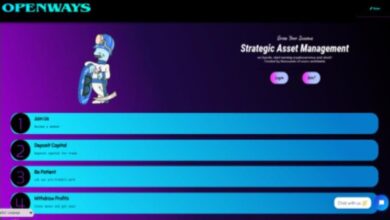Demystifying CFD Trading: A Beginner’s Guide to Making Informed Decisions

For beginners, the financial world can be quite daunting. The vast array of different investment options, complex financial instruments, and technical jargon can make it difficult to know where to start. One such instrument is CFD trading, which stands for Contracts for Difference. CFD trading is still relatively new, and many don’t know what it is, its risks, and the possibilities it brings. This guide will help you understand what CFD trading is, how it works, and the factors you should consider before investing.
What Is CFD Trading?
CFD trading is a contract between a buyer and a seller, where the buyer obtains the benefits of owning an asset without actually owning it. CFDs allow investors to invest in the price movements of an underlying asset. With a CFD, you can either go long or short on the underlying asset, allowing you to profit from both price increases and decreases. For instance, if the stock price of Company X is expected to go up, you can go long on it through CFD trading. If you think the company’s stock will fall, you can go short.
How CFD Trading Works
When trading CFDs, you typically trade on margin. This means that you only need a small deposit to control a large open position. The remainder of the position is often borrowed from a broker. Margin trading is advantageous because it can multiply your profits, but it can also multiply your losses. It’s important to understand these risks before investing in CFDs.
Risks to Consider
The leverage involved in CFD trading is what makes it so exciting, but also dangerous. The losses can be much larger than initially anticipated, especially if traders fail to do adequate research. Always research the underlying asset you’re interested in before investing – the market it is in, the company that owns it and external factors that could have an impact on it.
Before trading CFDs, it is essential to understand the risks involved, the mechanisms involved, as well as the fees and charges that come with trading. There are also emotional risks to keep in mind, such as the temptation to stay in positions that are losing money, rather than cutting the losses. To mitigate these risks, traders should set pre-determined stop-loss orders and other risk management strategies.
Choosing the Best CFD Broker
When choosing the best CFD broker, it’s essential to pay close attention to the fees and commissions involved. Also, security should be a priority. Select a broker that is regulated by a reputable authority and offers negative balance protection, which ensures that you can’t lose more than your account balance.
One of the best ways to find a reliable CFD broker is through research. Look for reputable brokers and compare their terms and conditions. You can also read reviews and get recommendations from other traders, but remember to take these with a grain of salt and do your own due diligence.
If you’re new to CFD trading, the concept might seem a bit daunting. The good news is that with the right knowledge and strategy, it’s possible to make informed decisions and navigate the CFD market with confidence. In this beginner’s guide, we’ll break down the basics of CFD trading, from what it is and how it works to its risks and benefits. By the end of this article, you’ll have a solid foundation for starting your own CFD trading journey.
What exactly is CFD trading? CFD stands for “Contract for Difference,” which is a type of derivative investment. When you trade CFDs, you’re betting on the price movements of an underlying asset without actually owning it. In simpler terms, you’re predicting whether the price of an asset will go up or down and then placing a speculative trade based on your prediction.
Because you don’t actually own the underlying asset in CFD trading, you can profit from both rising and falling prices. For example, if you believe that the price of a stock will decrease, you can enter a “short sell” position and make a profit if the stock price indeed falls. Conversely, if you believe that the price will increase, you can enter a “buy” position and make a profit as the price rises.
One of the biggest advantages of CFD trading is leverage. This means that you can trade with more money than you actually have in your account, which can lead to higher profits. However, leverage can also amplify losses, so it’s important to be cautious and have a solid risk management strategy in place.
As with any type of investment, CFD trading comes with its own set of risks. Because CFDs are leveraged products, you can lose more than your initial deposit if the market moves against you. Additionally, price volatility and sudden market movements can make CFD trading unpredictable. That’s why it’s essential to have a well-researched strategy and to never risk more than you can afford to lose.
Despite these risks, many traders choose CFDs as a way to diversify their portfolios and potentially maximize profits. Because CFDs allow you to trade a wide range of assets, including stocks, commodities, and forex, you can take advantage of different market conditions and capitalize on multiple opportunities. Additionally, CFDs are a popular choice for short-term traders looking to capitalize on small price movements.
Conclusion:
CFD trading can be a rewarding investment opportunity, but it comes with risks. Education, research, and the ability to manage risks are key to a successful trading experience. Take the time to understand what CFD trading is how it works, its risks, and the factors to consider before investing. Always work with a reputable CFD broker and only invest what you can afford to lose. With the right strategies and mindset, novice traders can make informed decisions and experience success in CFD trading.
By understanding the basics of CFD trading, you can start to make informed decisions and potentially reap significant rewards. It’s important to do your research, develop a solid risk management strategy, and never risk more than you can afford to lose. With the right approach, CFD trading can be a powerful tool for diversifying your portfolio and achieving your financial goals.





